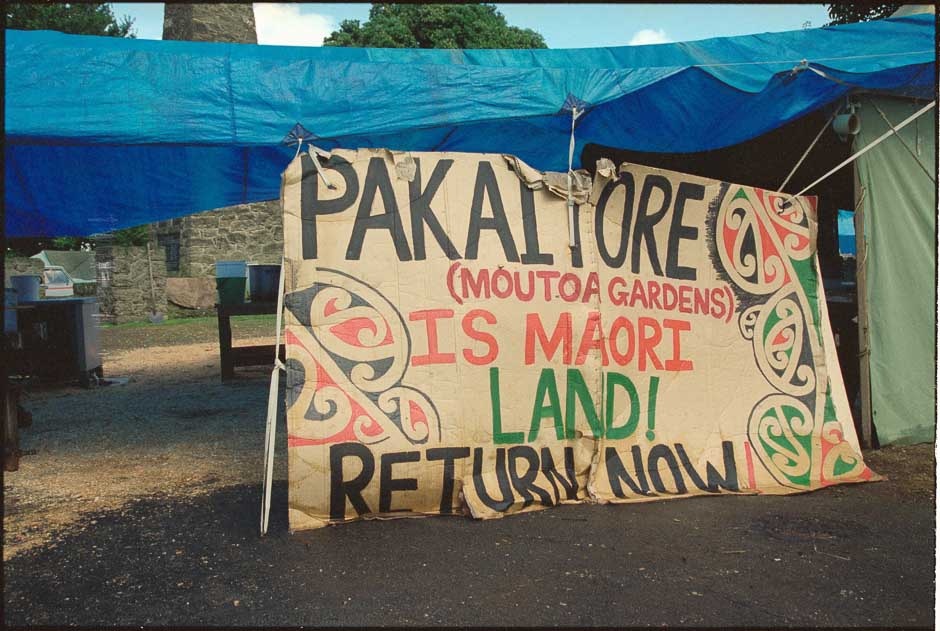
A notice on a kitchen tent at Moutoa Gardens, Whanganui, during an occupation by members of local iwi, 14 March 1995.
In February 1995 Te Rūnanga Pākaitore began a 79-day occupation of Moutoa Gardens that was intended to restore the mana of the Whanganui people over the site. The gardens had been established on or near the site of Pākaitore pā, a traditional place for trade before European settlement. Te Rūnanga Pākaitore claimed that it had been set aside from the purchase of Whanganui; the city denied this.
The protesters saw Moutoa Gardens as a symbol of past grievances. It had become a memorial to kūpapa Māori - those seen as loyal to the Crown. As well as the statue in memory of those who had died at Moutoa ‘in defence of law and order against fanaticism and barbarism’, a statue of the Pūtiki chief Te Keepa Te Rangihiwinui, (‘Major Kemp’) celebrated his victories over Te Kooti, the ‘murderer of women and children’.
This dispute highlighted the fact that issues dating back to the initial European settlement of the area remained unresolved. Controversy was rekindled by debate about whether Wanganui should be renamed Whanganui. Early lexicographers had missed the silent ‘h’ in the local Māori dialect and spelt the town - and the river - Wanganui. In 1991 the New Zealand Geographic Board responded to calls from some local Māori by changing the name of the river to Whanganui. In 2009 the public were consulted on whether to extend the change of name to the town. Opponents, including the Mayor, Michael Laws, argued that in the intervening years Wanganui and its people had created ‘its own identity, its own history, its own pride, its own mana’. Cabinet decided that either spelling was acceptable in everyday usage, but instructed government agencies to refer to the town as Whanganui.

Community contributions